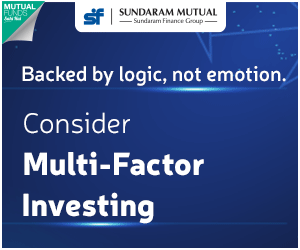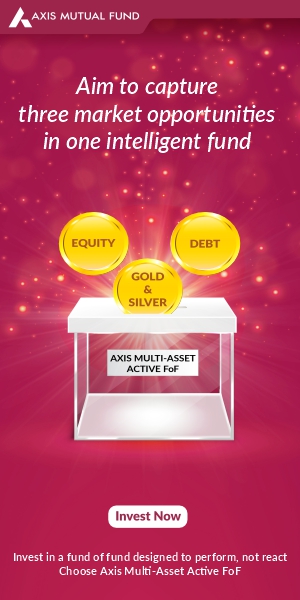How ELSS Mutual Funds can be your best tax saving option

Investors are perpetually debating should they invest to generate returns or should they invest to save taxes? The answer to this is rather simple, you could do both. While investing in a tax saving product you could also look into the rate of returns the product will yield in future. Equity Linked Savings Scheme (ELSS) is a uniquely advantageous scheme. While there are many schemes that are offered to save taxes, ELSS can also be used for wealth generation as it invests heavily in Equities to ensure the desired long term yields.
ELSS at a glance
- The lock in period is only three years, the least among the tax saving instruments.
- Investors can invest in equities and also get their funds managed by professionals.
- Long term capital gains are tax free. The dividends earned from an ELSS scheme are also tax free.
- The investors can avail a tax deduction of up to 1,50,000 INR on the ELSS investments u/s 80c of the Income Tax Act
- Investors can reduce the risk by investing in ELSS through SIP which ensures that the investor can take advantage of Rupee Cost Averaging.
ELSS vs United Link Insurance Plans (ULIPs)
ULIP has a lock in period of three to five years. ULIP has often been criticized due to lack of transparency along with high costs. The overhead costs such as the premium allocation charge and the policy administration charges in the investment of ULIPs have often been known to eat in to the returns. Hefty surrender charges are levied if the investment is withdrawn before five years often making this a very expensive investment. No such charges are applicable for ELSS except for a minor annual management fee deducted by the Asset Management Company. The performance of ULIP is often hampered by the overhead and administrative cost involved. The same is not applicable for ELSS.
ELSS vs Public Provident Fund (PPF)
It is a traditional scheme of the Government of India often used by tax payers to save tax up to 1,50,000 INR u/s 80c of the Income Tax Act. The lock in period of the scheme is as long as fifteen years and can be extended in block of five years after maturity. Partial withdrawals can be made on the commencement of the seventh year. The scheme mostly invests in both government and corporate bonds and securities and is a debt scheme.
While the risk is low in PPF, the returns are not at par with that of ELSS. For Example – If you would have invested Rs. 150,000 per year in PPF for last 15 years, then you would have got a maturity value of Rs. 46.98 Lacs against your total investment of Rs. 22.50 Lacs. Whereas, with same investment amount (thru SIP of Rs.12,500 for 180 months/ 15 years) in ELSS, you would have got a maturity value of Rs. 150.91 Lacs and 171.95 Lacs respectively from Franklin India Taxshield Scheme and ICICI Prudential Tax Plan (both, ELSS Schemes). As you can see the difference of return between the two products is more than a crore! (Please note that we have taken only two schemes to show the returns, the list is exhaustive and returns will vary from one scheme to another)
ELSS vs National pension Scheme (NPS)
NPS is more of a retirement solution than an investment solution. It invests partially in equities but the lock in period is till the retirement age of 60. This may be restrictive for young investors who are aiming for higher returns in a relatively medium period time. If you are looking to generate returns within the timeframe of three to five years then NPS is not the scheme to invest. The long term capital gains on ELSS are tax free. The same is not applicable for NPS. 40% of the maturity amount has to be used to buy annuities and remaining amount is taxable according to the income tax slab. While, NPS enjoys an additional 50,000 INR benefit under Section 80CCD, the tax treatment at maturity, moderate or low exposure to equities makes it slightly disadvantageous to ELSS.
ELSS vs National Savings Certificate (NSC)
NSC is a scheme launched by the Government of India. It is a fixed income earning instrument and the interest rates are almost at par with other Government tax savings instruments. NSC is compounded half yearly and the interest rates are declared annually. The current rate of interest is 8.5% compounded half yearly for an investment period of five years and 8.8% compounded half yearly for an investment period of ten years. The major disadvantage of NSC over ELSS is the tax treatment of interest earned. The interest earned in NSC is taxable and for this purpose it is reinvested as the reinvestment within the one lakh limit is not taxable. ELSS does not come with any such tax clause.
ELSS Vs Sukanya Samriddhi Scheme (SSS)
Sukanya Samriddhi Scheme (SSS) is an investment option for you only if you have a girl child of ten years or below. The age limit is 11 years only for 2015. The return for the FY2015-2016 is 9.2%. In ELSS good returns can be earned due to exposure to equities and the principal along with the growth can be redeemed after three years. ELSS has a minimum lock up period of three years. In SSS 50% of the withdrawal is allowed only when the girl child turns 18. The returns compared to ELSS are moderate due to no exposure to equities. Investment in SSS is goal specific and the maturity amount is accessible only to the girl child in whose name the account has been opened. ELSS serves no specific purpose and can be used to generate returns for any financial goal.
ELSS Vs Tax Savings Fixed Deposits
Tax savings fixed deposits have a minimum lock in period of five years. Withdrawal before the expiry of the lock in period will attract tax treatment on the principal. Tax rebate for such a scheme is extended only for the principal and not for the interest unless it is reinvested. The interest amount upto 10,000 INR is non-taxable other wise 10% TDS is applicable. ELSS trumps this scheme both on counts of lock in period and tax treatment. The lock in period for ELSS is only three years and the long term capital gains and dividends are totally tax free.
Hence, ELSS wins both on count of having a lock in period of only three years and being a scheme that heavily invests in equities and equity related instruments. Along with availing tax rebates u/s 80c tax payers can also look to generate wealth with substantial returns.
ELSS: Managing the Risks
It is often said that investment in equities is ridden with risks. It should be avoided by conservative investors and people who are planning for retirement at a very late stage in their lives, because of the volatility involved. This could not be far from the truth. Investing in equities for short term makes it risky. If the same investment is done for long term then it reduces the risk as the long time period diversifies the risk. Investment in ELSS done for tax saving purpose should ideally be done through SIP that allows an investor to pay a stipulate amount throughout the year. Investment through SIP also reduces the risk as it benefits from rupee cost averaging. Rupee cost averaging helps to stabilize an investment, especially equity investments, where the risk involved is higher.
The jury is out on whether SIP is better than lump sum, or the other way round. In a runaway bull market, lump sum investments are always more advantageous. However, investors may not have the funds to invest in lump sum. Secondly, equity markets are inherently volatile. SIPs are advantageous in volatile markets because of rupee cost averaging. Thirdly, SIPs help inculcate disciplined savings and investing habit, which helps investors meet their long term goal. The benefits of SIP notwithstanding, investors should invest in mutual funds through both the lump sum and SIP modes. They should allocate a portion of their monthly savings to invest in SIPs. At the same time, they should use one time cash flows like, annual bonus payout, maturity of fixed term investments, sale of assets, etc to invest in lump sum. If the investors think that, the market will be very volatile in the short term, they can also invest in lump sum in a low risk fund, like a liquid fund and transfer systematically to ELSS funds, using the Systematic Transfer Plan (STP), so that they can take advantage of volatility.
Investment in ELSS over a long time horizon can generate good risk adjusted returns. If you are looking to invest in an Equity scheme with long term benefits this may be a good option. While selecting an ELSS scheme an investor must check the performance of the various schemes and instead of just focusing on the returns, consistency must also be considered.
Conclusion - As an investor if you are looking to kill two birds with one sling, get returns and save tax, then ELSS is the scheme for you. You will be able to avail the maximum benefits only when you start investing in a systematic manner. Investing a lump sum at the end of the financial year will help you reduce your tax but your investment may not be able to generate the same amount of return. Hence, you are losing out on potential returns and not utilizing the time value of money. So start investing in tax savings schemes especially through ELSS route from the beginning of the financial year. Let the saving and investing begin!
Queries
-
What is the benefit of mutual fund STP
Aug 29, 2019
-
How much to invest to meet target amount of Rs 2 Crores
Aug 26, 2019
-
Can I achieve my financial goals with my current mutual fund investments
Aug 24, 2019
-
Can you tell me return of various indices
Aug 19, 2019
-
What would be the post tax return on different investments
Aug 18, 2019
-
Which Principal Mutual Fund scheme will be suitable for my retirement corpus
Aug 16, 2019
-
What is the minimum holding period for availing NCD interest
Aug 4, 2019
Top Performing Mutual Funds
Recommended Reading
Fund News
-
Bandhan Mutual Fund launches Bandhan Silver ETF FOF
Jan 12, 2026 by Advisorkhoj Team
-
Bandhan Mutual Fund launches Bandhan Gold ETF FOF
Jan 12, 2026 by Advisorkhoj Team
-
The Wealth Company Mutual Fund launches The Wealth Company Gold ETF FOF
Jan 9, 2026 by Advisorkhoj Team
-
Mahindra Manulife Mutual Fund launches Mahindra Manulife Innovation Opportunities Fund
Jan 9, 2026 by Advisorkhoj Team
-
Jio BlackRock Mutual Fund launches Jio BlackRock Short Duration Fund
Jan 8, 2026 by Advisorkhoj Team














